Milan, a city as rich in gastronomic heritage as it is in art and fashion, offers a tapestry of dining experiences, flawlessly blending traditional flavors with cosmopolitan flair. We find that the historical restaurants of Milan serve not just as places to eat but as vessels of history, each telling a story through their century-old recipes and vintage decors.
The city’s mythical culinary status comes alive especially in spaces that have witnessed the ebb and flow of trends yet remained steadfast in their devotion to Milanese cuisine. Whether it is a breakfast at a café from the piazzas of yesteryear like Camparino in Galleria, or exploring the time-honored elegance of establishments such as Ristorante Savini, we ensure that your culinary journey is steeped in authenticity.
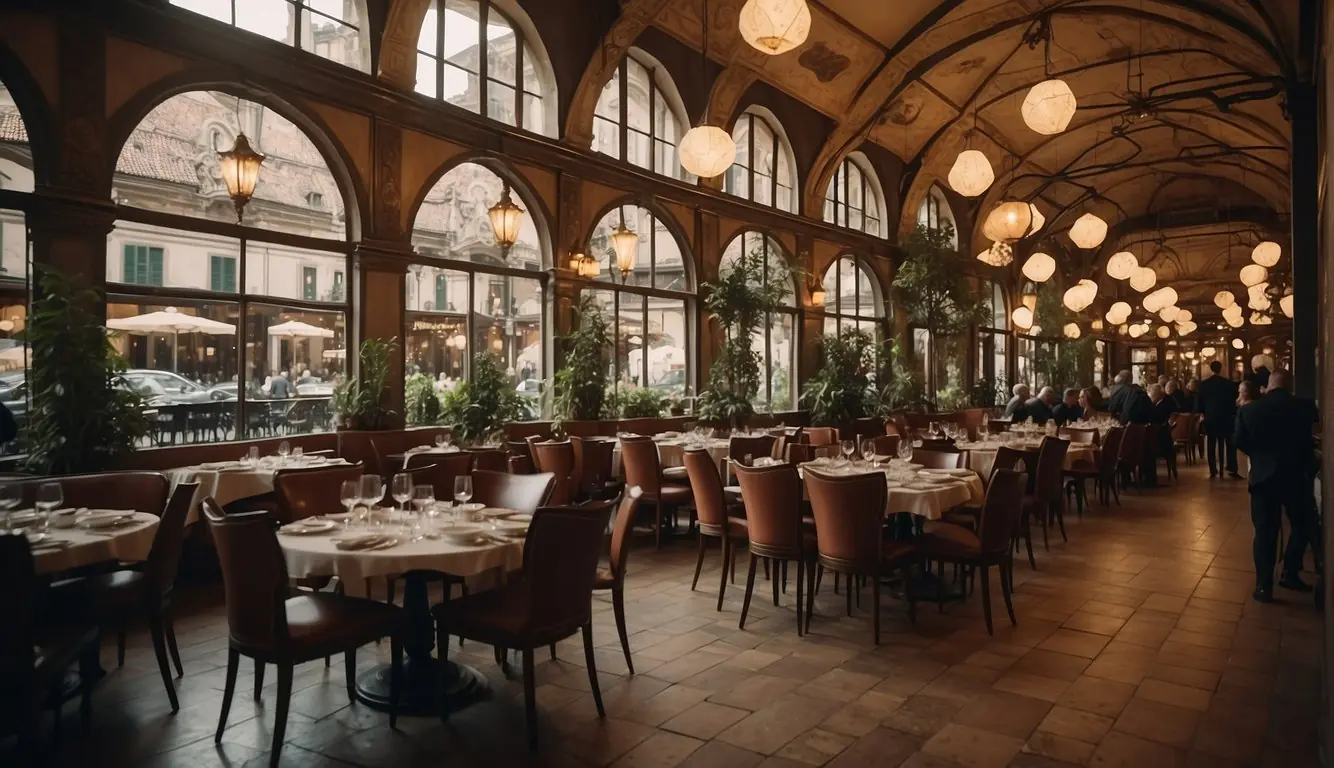
Our exploration takes us through cobbled streets to palatial dining rooms where we can savor the quintessential panzerotto, a testament to the confluence of northern and southern Italian palate. From the traditional Trattoria alla Pesa to the modern plates served amidst art at Boeucc, every course is a slice of Milan’s storied past. We understand the importance of preserving these flavors and stories, especially in a world rapidly embracing new food experiences and culinary trends. It is our belief that the true essence of Milan’s culinary scene is best experienced within the walls of its historical eateries, an experience akin to dining within a living museum.
Historic Restaurants in Milan
Key Takeaways
- Milan’s historical restaurants offer an authentic dining experience reflective of the city’s rich culinary heritage.
- These establishments have preserved traditional Milanese cuisine amidst evolving culinary trends.
- Historical eateries provide a dynamic gateway to understanding both the past and present Milanese approach to meals.
Milanese Cuisine Overview
Milanese cuisine is a revered tradition, reflecting the rich cultural heritage of Italy’s fashion capital. Here we explore the storied eateries and emblematic dishes that have secured Milan’s place as a bastion of culinary excellence.
Historic Eating Venues
Our journey through Milanese cuisine begins with its historic eating venues. These timeless institutions, such as osterias and trattorias, are more than just restaurants; they are a testament to Milan’s gastronomic legacy. Notable places like Trattoria Masuelli San Marco have been foundational in fostering what we now celebrate as traditional Milanese cuisine. The ambiance of these venues, with their classic decor and familial warmth, invites us to indulge in a dining experience steeped in history.
Traditional Local Dishes
In considering the quintessence of Milanese cuisine, traditional local dishes take center stage. These recipes are crafted with local ingredients, following time-honored methods that have been passed down through generations.
The menu in a Milanese osteria might feature staples such as risotto alla Milanese or the renowned cotoletta—a breaded veal cutlet that has become synonymous with the city. La Bettola di Piero, for instance, adheres to seasonal variations, ensuring that each dish, whether it be a simple gnocchi or an elaborate osso buco, delivers the authentic taste of Italian cuisine. It’s in these flavors and preparations that one truly understands the essence of what makes food not just Milanese, but an enduring chapter in the larger story of Italian cuisine.
Dining in Milan
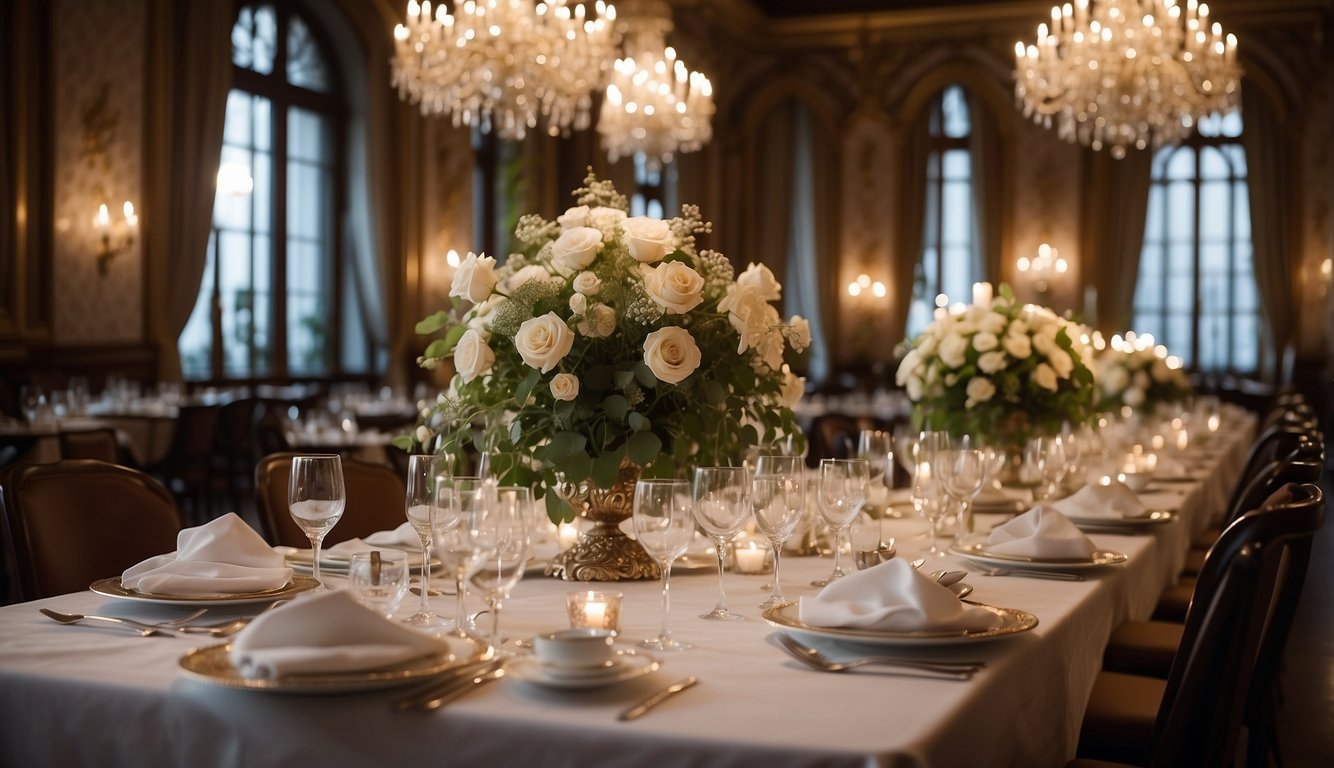
When we explore Milan, we’re met with an elegant tapestry of dining experiences, ranging from contemporary restaurants to famous Milanese eateries that tell the stories of the city’s culinary history.
Contemporary Restaurants
Milan’s dining scene thrives with innovation, where talented chefs bring a modern twist to Italian gastronomy. Among the contemporary offerings, Langosteria stands out with its focus on seafood, and its chic ambiance echoes the modern spirit of the city. For those searching for an avant-garde dining experience, the restaurant located near the Fondazione Prada art complex is the epitome of Milan’s vibrant food culture.
Famous Milanese Eateries
The heart of Milan’s dining tradition beats in its historic restaurants and trattorias. The iconic Trattoria Masuelli, established in the 1920s, has been serving classic Milanese cuisine with a homely touch for generations. Galleria Vittorio Emanuele II is not just an architectural wonder but is also home to the celebrated Ristorante Savini Milano, a venue that has been the benchmark for fine dining since the 19th century. For those seeking culinary excellence, Milan does not disappoint, with several Michelin-starred options, where every dish is a masterpiece of flavor and presentation. Erba Brusca, another renowned name, entices diners with its farm-to-table concept, utilizing ingredients from its own urban garden to create delectable seasonal dishes.
Specialty Foods and Ingredients
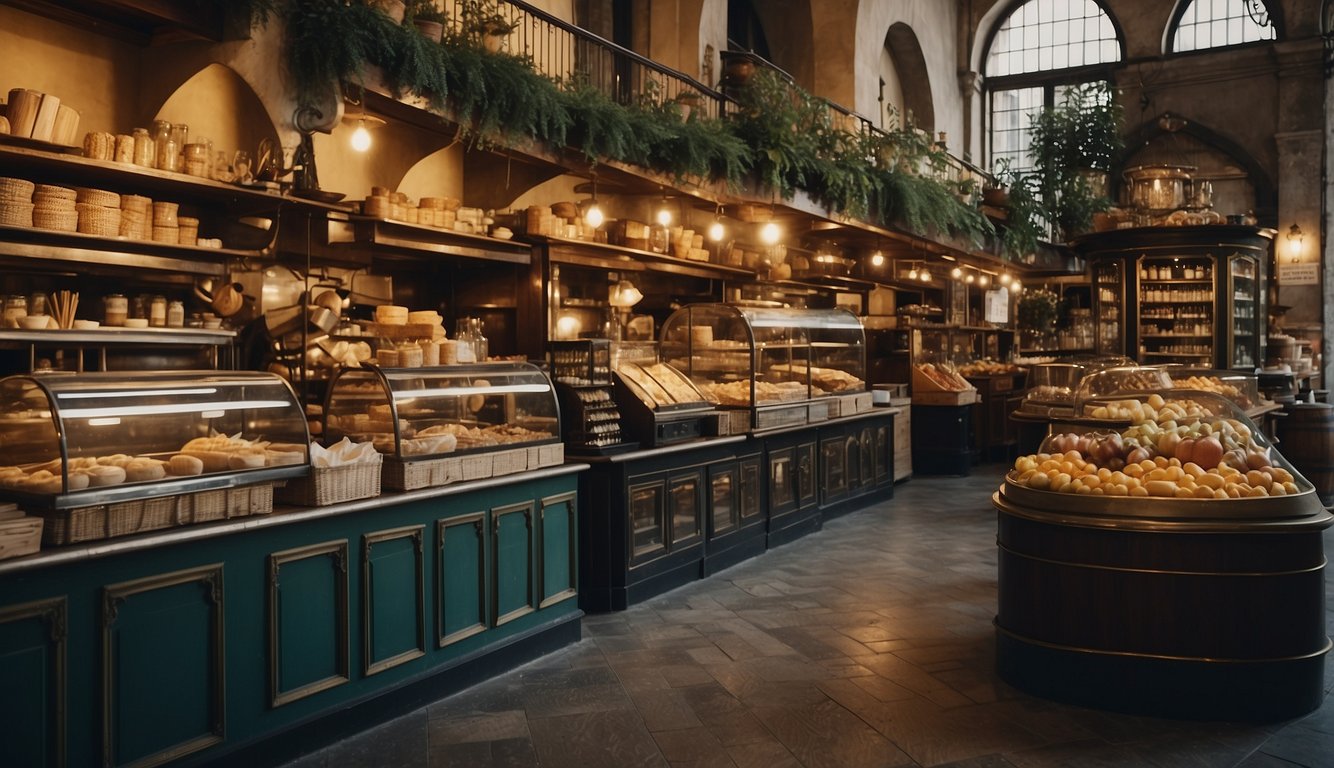
In Milan, culinary tradition is steeped in rich flavors and unique components that characterize the city’s gastronomy. Let’s explore the signature tastes synonymous with Milan and the distinct ingredients that define the local cooking style.
Signature Milanese Flavors
The tradition of Milanese cuisine is highlighted by risotto alla Milanese, a golden-hued dish that is as much a feast for the eyes as it is for the palate. The key to its luxurious color? Saffron, a precious spice that not only imparts a vibrant yellow hue but also a subtle earthy flavor. These short-grain rice dishes often incorporate broth, Parmigiano Reggiano, and bone marrow, embodying the classic tastes of the region.
Another cherished Milanese specialty is mondeghili, which are delectable meatballs traditionally made from the leftover meat of various types, such as veal and beef, mixed with bread and flavored with lemon zest and parsley.
Unique Ingredients in Milanese Cooking
Our exploration of Milanese cuisine wouldn’t be complete without delving into the unique ingredients that distinguish these dishes. Polenta, a cornerstone of northern Italian cooking, finds its way into the Milanese kitchen where it is served both as a creamy delight and in more solid forms.
But beyond grains, Milan is also known for its exquisite use of truffle, an indulgent ingredient that graces anything from pastas to meats, adding a luxurious depth to dishes.
When it comes to vegetables, simplicity reigns, with freshness being the utmost priority, enhancing dishes without overpowering them.
And while not native to Milan, pizza has been embraced with local variations, including the use of distinct toppings that reflect the city’s taste preferences, such as gorgonzola cheese and quality meats.
The inclusion of these ingredients and flavors illustrates our dedication to not just preserving Milanese culinary heritage, but to celebrating it in every bite.
Beverages and Wine Culture
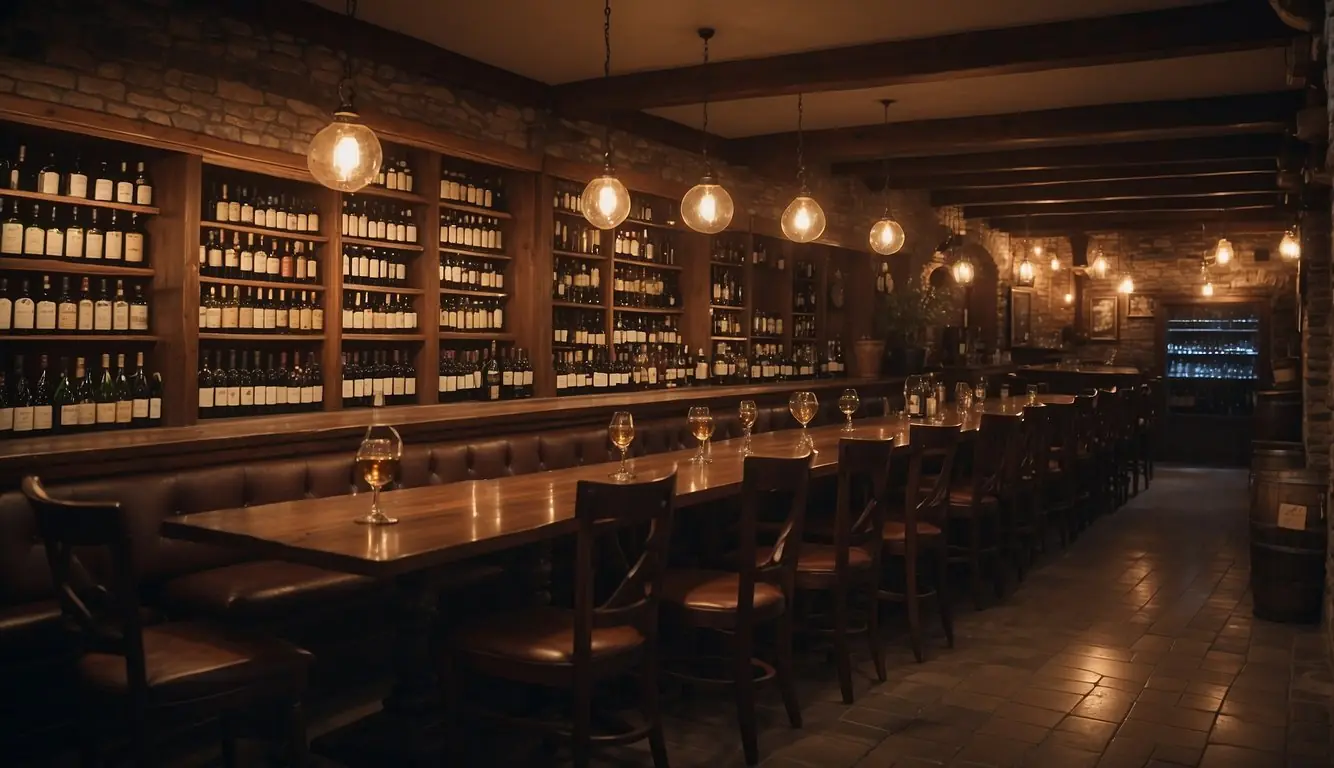
In Milan, our deep appreciation for gourmet experiences extends beyond the plate to the glass. We pride ourselves on a beverage culture that elegantly marries tradition with contemporary tastes.
Wine Pairings for Milanese Dishes
Milanese cuisine is renowned for its rich flavors, and we understand the importance of complementing every dish with the perfect wine. A classic Risotto alla Milanese, with its saffron-infused elegance, calls for a glass of full-bodied Chardonnay to balance the dish’s creamy texture. For the hearty Ossobuco, a favorite of ours, nothing pairs better than a robust Nebbiolo. We make sure that our wine lists are curated to enhance these experiences, from natural wines to aged classics.
- Risotto alla Milanese: Chardonnay
- Ossobuco: Nebbiolo
Popular Local Beverages
Our conversations often begin with an aperitivo, perhaps a sparkling Prosecco or a refreshing Negroni cocktail, both of which are beloved by locals and visitors alike. We cherish our street food too, where sipping a cool cocktail alongside a bite of panzerotto is not just eating but an experience. We seek out bars and restaurants that understand the art of the drink, places where quality is reflected in every sip. For example, in Milan, What to Drink in Milan | Wine Enthusiast provides insight into the wide array of modern bars and historic watering holes that define our urban taste landscape.
- Aperitivo Beverages:
- Prosecco
- Negroni
- Street Food Pairings:
- Panzerotto with a cool cocktail
Food Experiences and Culinary Trends
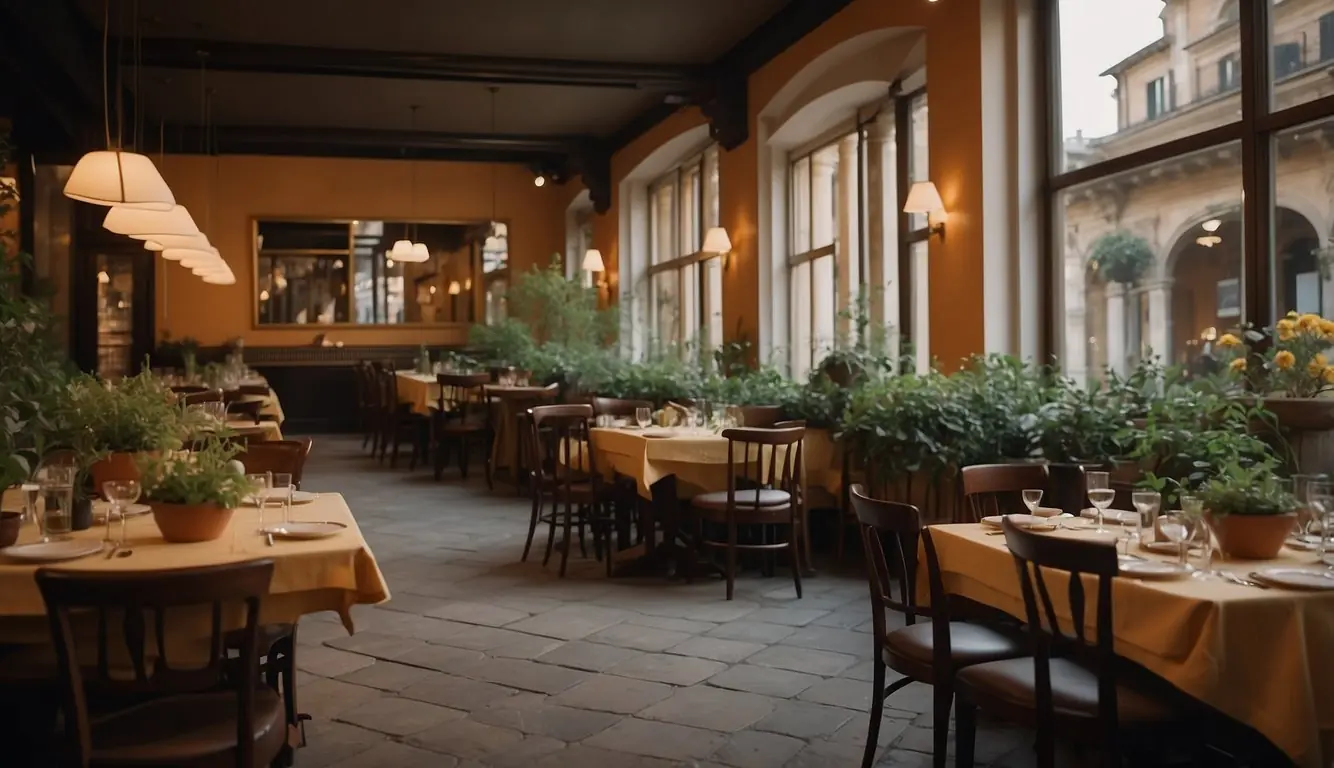
In Milan, the intersection of tradition and innovation creates a dynamic culinary landscape, replete with historic eateries and cutting-edge food trends. We witness how time-honored establishments embrace contemporary movements, giving rise to a modified dining culture that cherishes the past while celebrating the present.
Modern Culinary Developments
Milan’s dining scene is constantly evolving, with modern culinary developments manifesting in various forms. Renowned chefs like Andrea Berton of Ristorante Berton have been instrumental in shaping the city’s contemporary gustatory offerings. His cuisine represents a celebration of innovation within the framework of Italian cooking.
In the realm of haute cuisine, the influence of Gualtiero Marchesi, the late maestro of modern Italian gastronomy, remains pervasive across Milan’s food landscape. His legacy thrives in restaurants that continue to push the envelope, ingeniously incorporating international techniques into local Milanese dishes.
Trending Food Spots
When exploring trending food spots, we are often guided by the current zeitgeist. At Trattoria Mirta, you’ll find a harmonious blend of the time-honored trattoria atmosphere with a nuanced, contemporary touch. Here, innovation is not just in the dishes served but also in the very fabric of the venue’s identity.
Moreover, Milan’s culinary offerings are increasingly cognizant of dietary preferences with eateries like 28 Posti, championing vegan and vegetarian options. This reflects not only a culinary trend but also a broader social awareness. Similarly, establishments such as Gastronomia Yamamoto offer a fusion experience, mixing Japanese influences with Italian tradition to cater to a cosmopolitan clientele.
The Milanese Approach to Meals
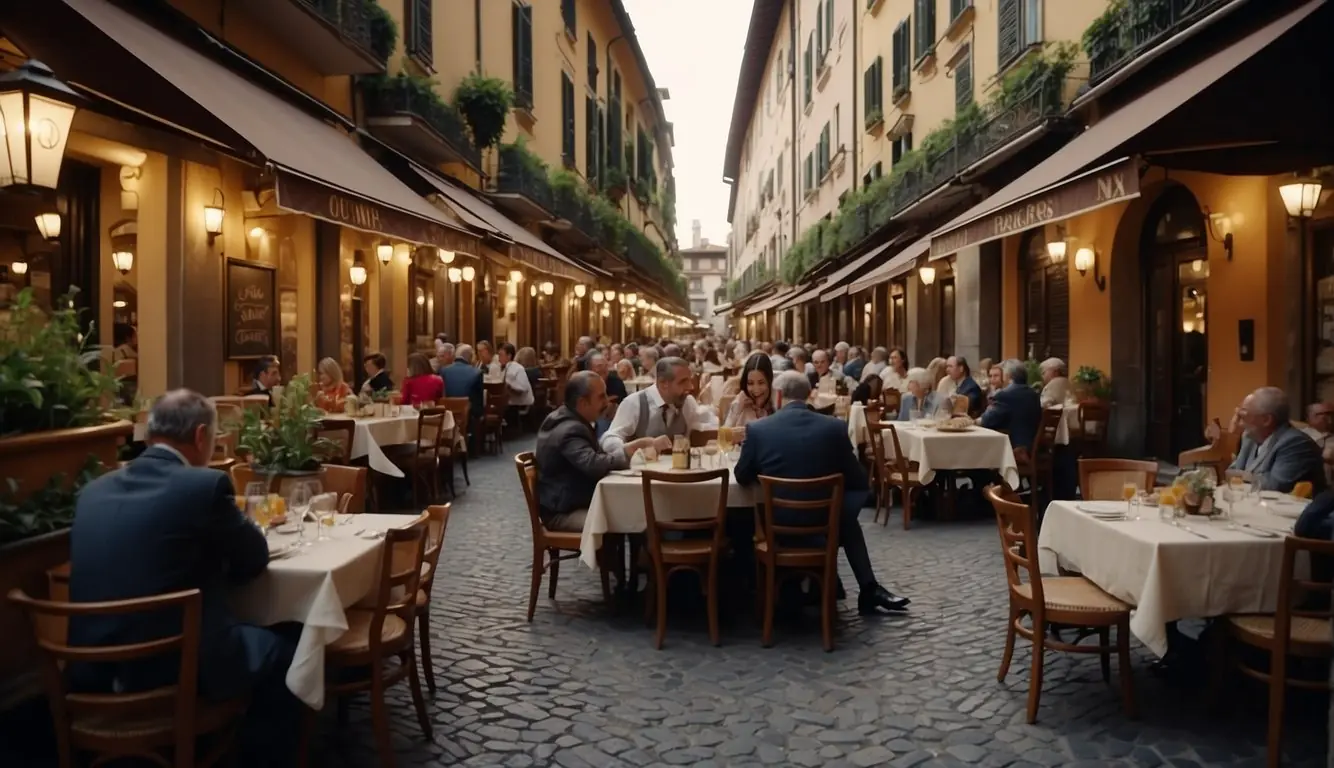
In Milan, meals aren’t just a routine, they’re an art form, a reflection of the city’s rich culinary history blended with a modern twist.
Traditional vs. Modern Meal Courses
Milan’s culinary tradition rests heavily on classic dishes that define its cultural identity. We pride ourselves on a variety of pasta, often rich in butter and cheese, indicative of the regional cuisine. You’ll find braised meats as a cornerstone of Milanese main courses, highlighting the heritage recipes passed down through generations. A trip to Trattoria Masuelli San Marco exemplifies this, where the art of classic Milanese dishes continues to thrive.
On the modern front, Milan is ever-evolving. We now see salads and soups that incorporate international influences while still respecting local flavors. Sushi has become a popular dish among the fashionable Milanese crowd, infusing a contemporary edge to the dining scene. Chef Berton leads the way in modern Milanese cuisine, creating innovative dishes that maintain a respect for traditional techniques.
Casual Eats and Fine Dining
For a casual dining experience, Milan offers a plethora of options where sandwiches and gelato stand out. We enjoy these quick bites that reflect the hustle of city life yet maintain authentic Italian flavors. On the other hand, Milan’s fine dining showcases the pinnacle of culinary craftsmanship. The balance of ambiance, service, and exquisite dishes makes restaurants like Trattoria Arlati a must-visit for anyone seeking the traditional Milanese elegance and gastronomy.
Noteworthy Milan Culinary Destinations
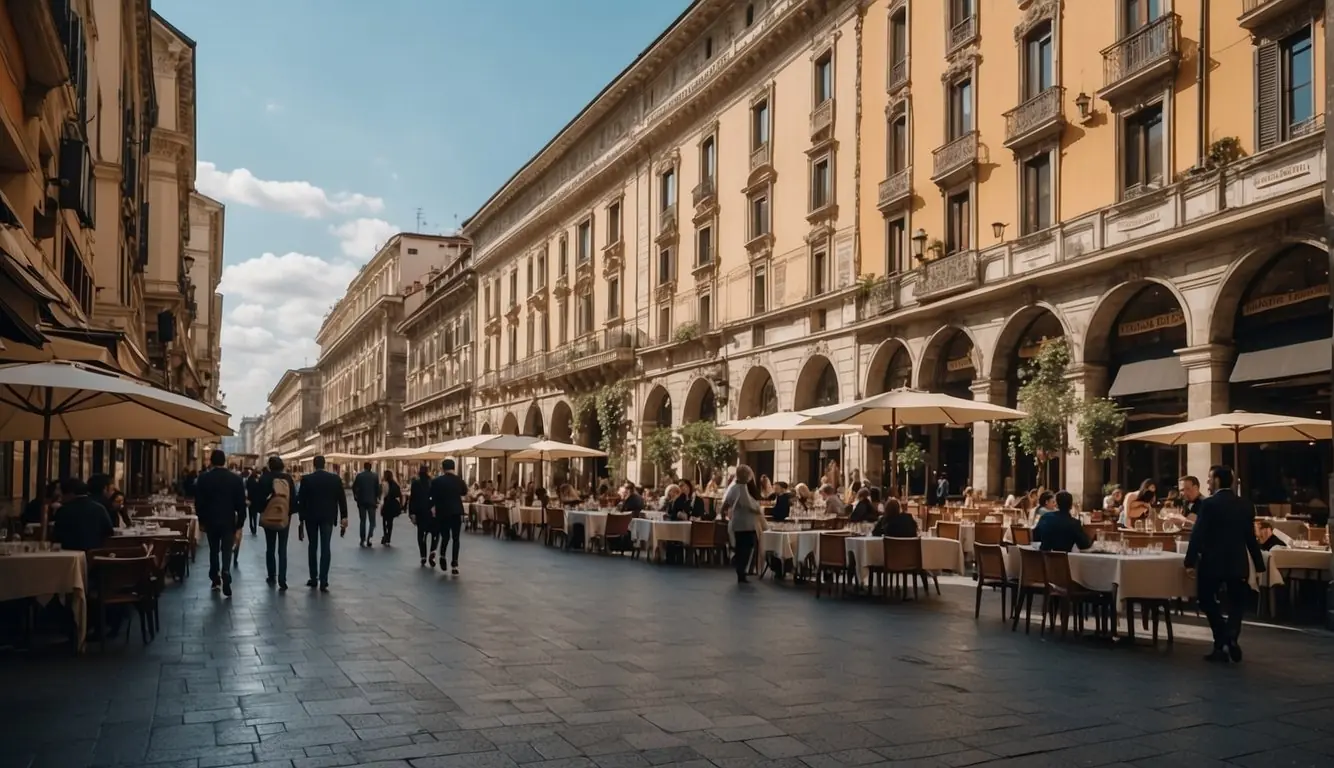
Milan’s gastronomical landscape is steeped in a rich culinary tradition, offering vibrant markets and historical dining streets that tie together the past and present of Italian cuisine. Whether you seek the bustling atmosphere of local markets or the charming streets that boast age-old recipes, Milan serves as a testament to Italy’s food heritage.
Must-Visit Shops and Markets
In the realm of gourmet food shopping, Peck stands as a culinary landmark in Milan. Nestled close to the Piazza Duomo, this renowned delicatessen is where we can explore an exquisite selection of high-quality local and international goods. From finely aged cheeses to artisan cured meats, Peck invites both locals and visitors to indulge in the finest ingredients that contribute to Milan’s status as a stalwart of Italian gastronomy.
Iconic Food Streets and Districts
When it comes to dining, the inherent charm of Milan’s historical streets beckons. Ratanà, set within the repurposed surroundings of a 19th-century train station, epitomizes the harmonious blend of Milan’s history and contemporary cuisine. This establishment is a must for those seeking modern interpretations of Lombard classics. Furthermore, the Dolomite region’s influence on Milan’s food scene can be felt in dishes that incorporate its robust flavors and unique ingredients. Here is where tradition is not just continued, but celebrated in every bite.
Health and Sustainability in Milanese Cooking
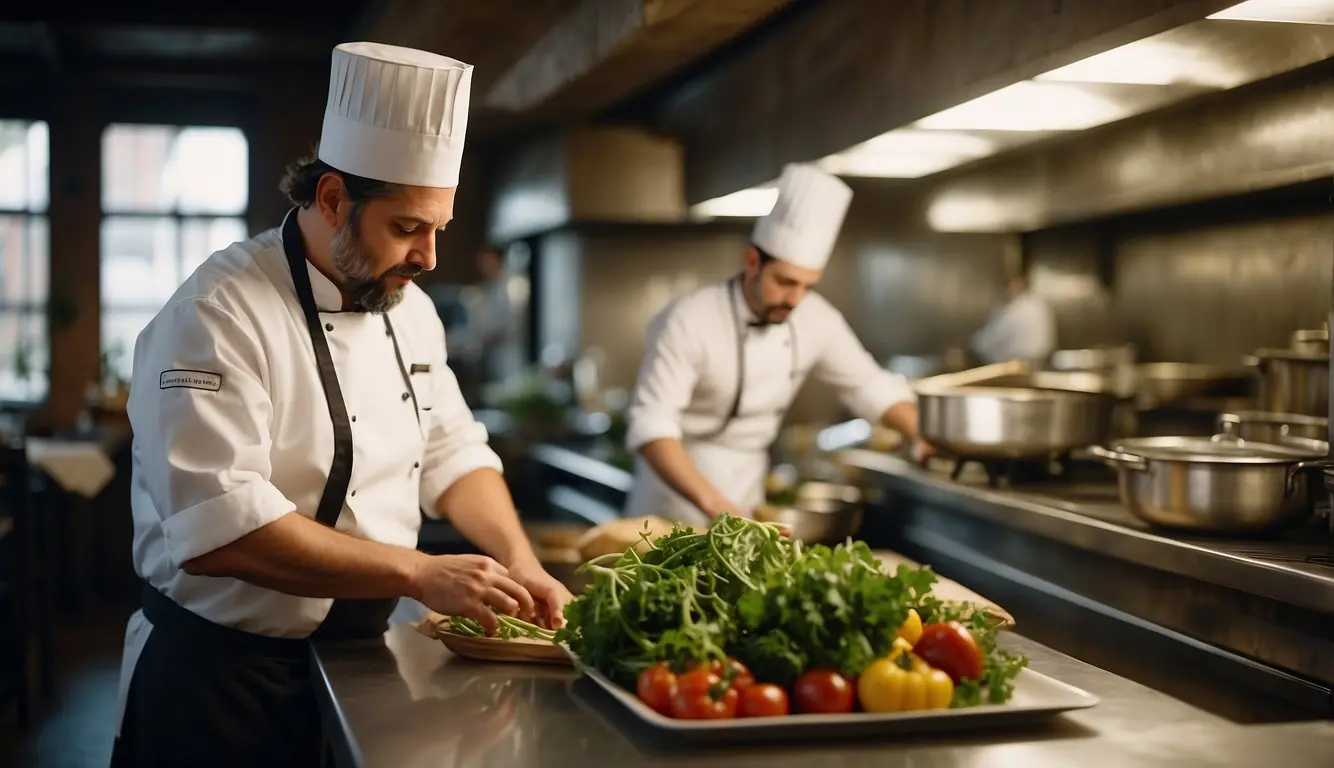
Milanese cuisine is embracing a transformation that prioritizes both health and minimal environmental impact. We’ll explore how this shift is influencing eating habits and the ways in which restaurants are implementing sustainable practices.
Evolving Healthy Eating Habits
The conversation around health in Milan’s historic culinary scene is evolving. Renowned establishments are now incorporating healthier options to accommodate changing dietary preferences. A clear illustration of this is the increasing availability of vegetarian and vegan choices on menus that traditionally featured meat-heavy dishes. Diners can now enjoy the old world charm of Milan while indulging in dishes that cater to their health-conscious lifestyle. For instance, La Bettola di Piero cleverly integrates nutritious variants of classic Milanese dishes.
Focus on Sustainable Food Practices
Alongside health, there’s a strong emphasis on sustainability within Milanese cooking. Restaurants are increasingly sourcing ingredients from local, organic farms to decrease their carbon footprint and support the community. This approach ensures that the food is not only fresh but also beneficial to the environment. A shift towards sustainable seafood and responsibly raised meat is becoming more prevalent, in line with global sustainability efforts. For example, dining spots like Trattoria Masuelli San Marco are revered for their historical significance and dedication to sustainable food practices.
Conclusion
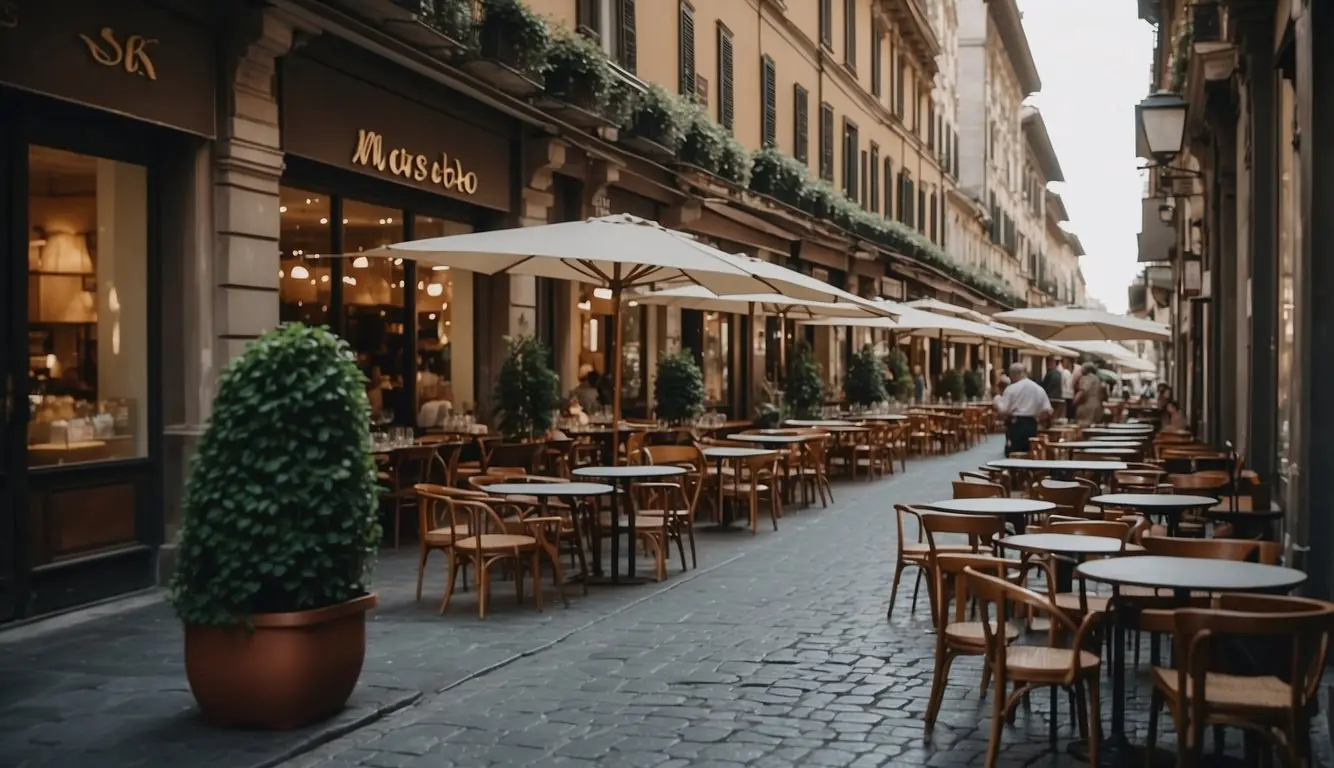
In our journey through Milan’s historic eateries, we’ve uncovered a rich tapestry of culinary tradition. From the timeless Milanese risotto to the sweet fluffiness of panettone, these venerable establishments offer more than just meals; they serve slices of Italy’s gastronomic heritage.
We appreciate the quality of the traditional dishes, each telling a story of the city’s past. The renowned panzerotto ties the north and south together in a delightful gastronomic union, while the creamy zabaglione offers a taste of Milan that is both heartwarming and luxurious.
Our experiences in these restaurants, such as the elegant Ristorante Savini in the Galleria, or the historic charm of Trattoria alla Pesa, are reminders of the care and dedication poured into every dish. It’s clear that good food in Milan isn’t just about sustenance; it’s an art form that has been perfected over centuries.
As we leave behind the polished silverware and the murmur of content diners, we take with us the certainty that Milan is a city where every meal can become a historical exploration. From the hearty risotto to the festive panettone, Milan caters to all palates with impeccable grace.
We invite epicureans everywhere to explore these culinary landmarks, where every bite is a journey through time, and every visit enriches our understanding of Milanese culture.
Frequently Asked Questions
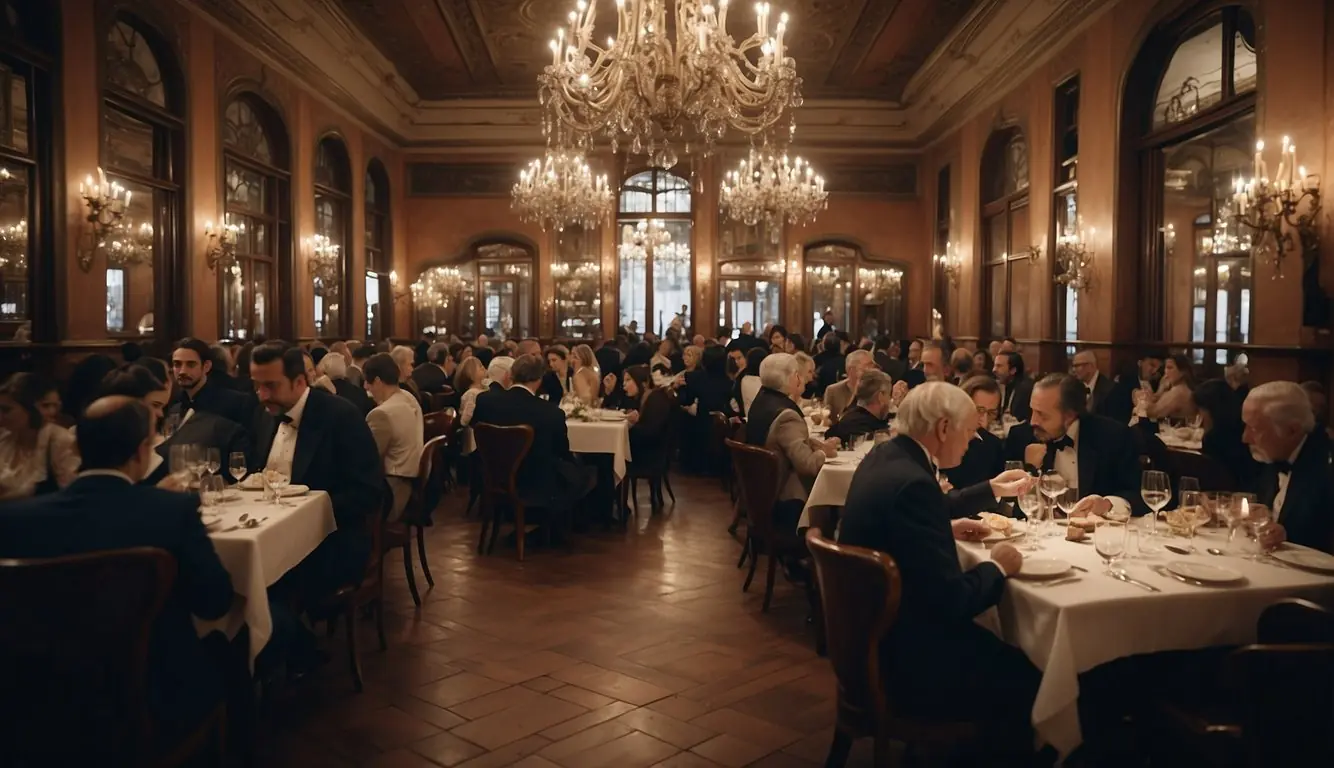
In this section, we’ll provide answers to some of the most common questions about historical dining experiences in Milan.
Which historic restaurants in Milan are considered must-visit?
Among the must-visit historic restaurants, Trattoria alla Pesa is renowned for setting a place in history with its traditional flavor. Additionally, the elegance of Ristorante Savini located within Galleria Vittorio Emanuele II offers a classic dining experience.
Where can I find Milanese cuisine in a historic setting in Milan?
If you are seeking Milanese cuisine in a historic setting, Al Garghet offers a menu with traditional dishes in a dialect handwritten on squared-paper notebooks.
What are some under-the-radar restaurants with historical significance in Milan?
For an under-the-radar experience with historical significance, establishments such as Panificio Luini uniting north and south with its famous panzerotto, is an excellent choice.
Can you list the oldest operating restaurants in Milan?
We acknowledge the famed Ristorante Rigolo dal 1958, established in 1958 and known for its historical dishes with innovative ideas, as one of the oldest operating restaurants in Milan.
How do the historic restaurants in Milan rank in terms of Michelin stars?
While we focus on the historical aspect, it’s important to note that not all historic restaurants in Milan may boast Michelin stars, as these ratings are awarded based on a specific set of criteria.
Which restaurants are known for serving traditional Milanese dishes?
For traditional Milanese dishes, Milan’s Top Spots are known to serve classics like risotto alla Milanese, where the authenticity of local flavors is preserved.
